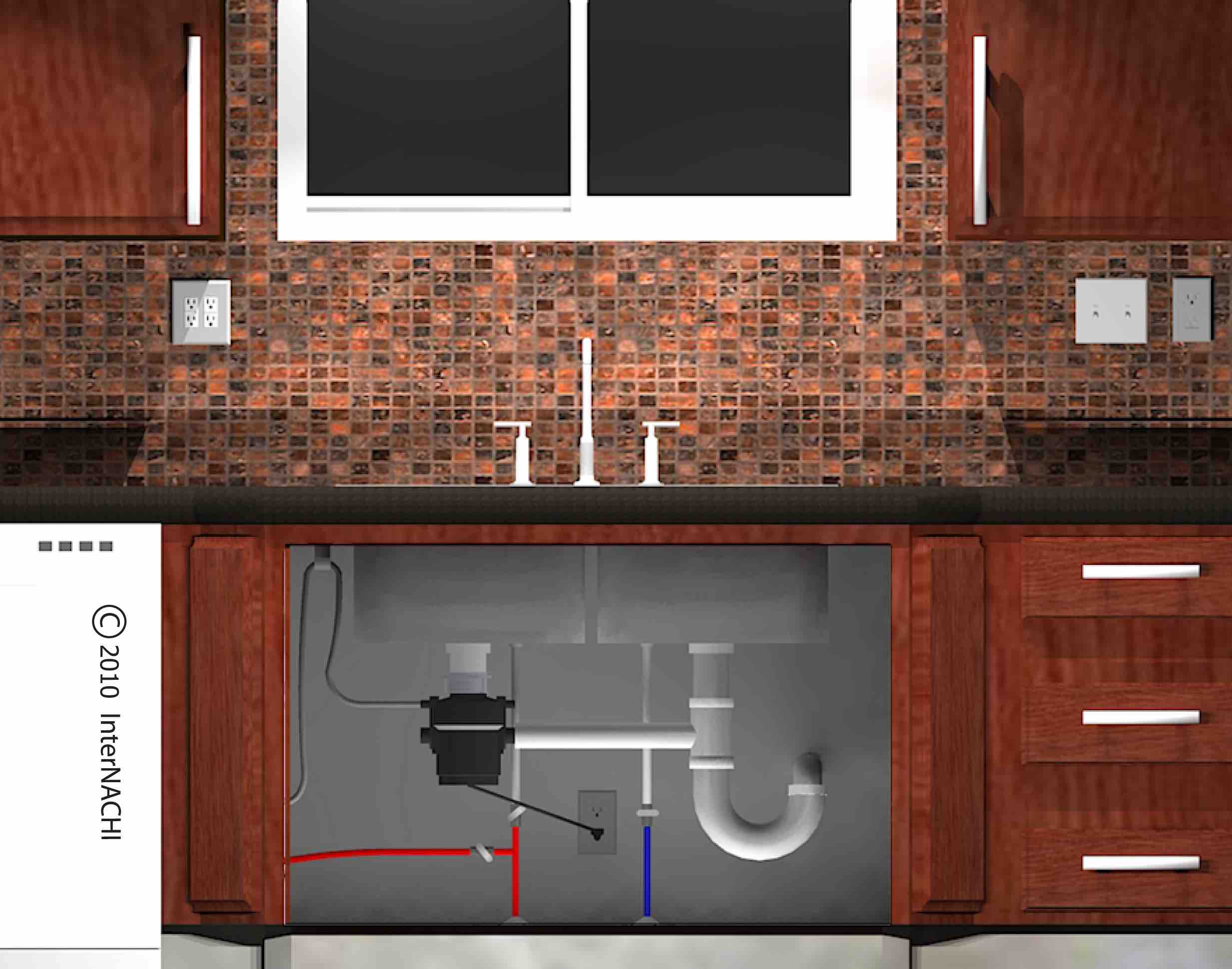Download the Inspection Checklist for the Food Waste Disposer
Some building officials apply the code to require GFCI protection for the food waste disposer in the kitchen regardless of how the unit is wired. The 2024 IRC R3902.12 does not list the disposer as an appliance that requires GFCI protection; however, the electrical branch circuits that supply appliances in the kitchen, such as the dishwasher, must have GFCI protection, regardless of whether the appliance is hardwired or cord-and-plug-connected.
A possible addition to the checklist is to run water for awhile before running the disposal. Check for leakage underneath and that back-up in the sink is not occurring. This is especially applicable to new construction. I’ve encountered instances where the trades people were washing out their mud/grout buckets and washing tools in the kitchen sink causing blockages in the drain line. It does not take long running water to see a blocked or partially blocked trap.
BTW I always run water this way and check for leakage and backups before testing the disposal and the dishwasher. You’re there for the disposal test but may walk away for the dishwasher test and that can be a major problem.
Disposers should have a dedicated electrical circuit…
Disposals do not necessarily require a dedicated circuit.
Check for a clamp securing the electrical wire to the unit. This prevents strain on electrical connections.
In addition to a clamp connector, the wiring method should be inspected. If the circuit is a switched receptacle, it should be an listed appliance cord or a flexible cord with attachment plug. Additionally, the receptacle should be accessible and located to avoid physical damage to the cord. If it is hardwired, the wiring should be protected from physical damage, such as a flexible metal conduit. “Homemaid” appliance cords using NM cable should be called out.
That is correct. For example it can be code compliant to have two fastened in place appliances like the dishwasher and the disposal on the same circuit providing that the total ampacity of the two appliances doesn’t exceed the circuit ampacity. If the manufacturer’s instructions that are part of the listing of the appliance require an individual branch circuit for the appliance then it cannot be on a circuit with something else.
Thanks, @rbleich. What are the code references for each of this points?
It isn’t so much about code, but about using the right material for the right job. Flexible cord is used when flexibility is needed. NM cable is not. Flexibility may be needed if the disposal needs servicing.
Protection from physical damage is in NEC 334.15. The flexible cord and receptacle reference can be found in 422.16(B)(1).
Good points, @rbleich. We updated the checklist. Type NM cable cannot be directly connected to a garbage disposal unit because the cable would not be protected from damage as is required by code
Flexible cord is used when flexibility is needed. NM cable is not.
A hardwired disposal was found. NM cable was not protected from physical damage. What appeared to be lamp cord was used for the switch leg. Recommended correction by a licensed electrician.
Protection from physical damage is in NEC 334.15. The flexible cord and receptacle reference can be found in 422.16(B)(1).
@rbleich, checklist is updated with: “Type NM cable cannot be directly connected to a garbage disposal unit because the cable would not be protected from damage as is required by code (Refer to 2024 IRC E3802.3.1). Flexible metal conduit and flexible cord are the two most commonly installed wiring methods for garbage disposal units. Flexible cord is ideal, because it makes installation and removal easy. Refer to 2024 IRC E4101.3 Commentary.”
And… The length of the flexible cord for the built-in dishwasher is at least 36 inches and a maximum of 78 inches. Refer to 2024 IRC E4101.3.
How ridiculous is all that? The NM can’t be protected from damage but a flexible appliance cord can. Many jurisdictions allow NM cable for these installations. I see it all the time. They are “hardwired.”
When I made my recommendations, the checklist didn’t include inspecting the wiring method. I didn’t intend on him creating an all out ban of NM cable.
I see it as another flaw in the InterNACHI SOP., which only requires the inspector to describe the “type of wiring.”’
The Indiana (ASHI) SOP, on the other hand, requires the inspector to describe the ”wiring method*. There are several wiring methods that protect NM cable from physical damage.



